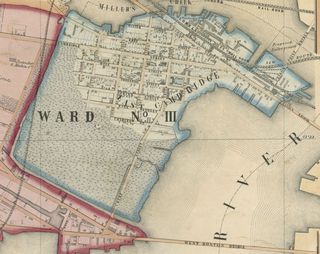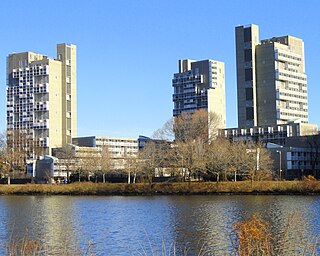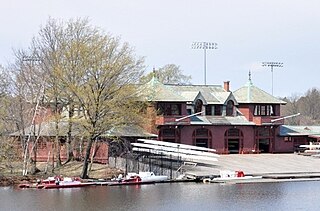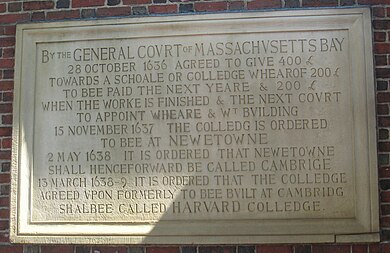
Middlesex County is a county located in the Commonwealth of Massachusetts, United States. As of the 2020 census, the population was 1,632,002, making it the most populous county in both Massachusetts and New England and the 22nd most populous county in the United States. Middlesex County is one of two U.S. counties to be amongst the top 25 counties with the highest household income and the 25 most populated counties. It is included in the Census Bureau's Boston–Cambridge–Newton, MA–NH Metropolitan Statistical Area. As part of the 2020 United States census, the Commonwealth's mean center of population for that year was geo-centered in Middlesex County, in the town of Natick.

Suffolk County is located in the Commonwealth of Massachusetts, in the United States. As of the 2020 census, the population was 797,936, making it the fourth-most populous county in Massachusetts. The county comprises the cities of Boston, Chelsea, Revere, and Winthrop. The traditional county seat is Boston, the state capital and the largest city in Massachusetts. The county government was abolished in 1999, and so Suffolk County today functions only as an administrative subdivision of state government and a set of communities grouped together for some statistical purposes. Suffolk County is located at the core of the Boston-Cambridge-Newton, MA-NH Metropolitan Statistical Area as well as the greater Boston-Worcester-Providence, MA-RI-NH-CT Combined Statistical Area.

Harvard Yard, in Cambridge, Massachusetts, is the oldest part of the Harvard University campus, its historic center and modern crossroads. It contains most of the freshman dormitories, Harvard's most important libraries, Memorial Church, several classroom and departmental buildings, and the offices of senior University officials including the President of Harvard University.

The Harvard University Science Center is Harvard University's main classroom and laboratory building for undergraduate science and mathematics, in addition to housing numerous other facilities and services. Located just north of Harvard Yard, the Science Center was built in 1972 and opened in 1973 after a design by Josep Lluís Sert, who was then dean of the Harvard Graduate School of Design.

East Cambridge is a neighborhood of Cambridge, Massachusetts. East Cambridge is bounded by the Charles River and the Charlestown neighborhood of Boston on the east, the Somerville border on the north, Broadway and Main Street on the south, and the railroad tracks on the west. Most of the streets form a grid aligned with Cambridge Street, which was laid out to directly connect what is now the Charles River Dam Bridge with what in 1809 was the heart of Cambridge, Harvard Square. The northern part of the grid is a roughly six by eight block residential area. Cambridge Street itself is retail commercial, along with Monsignor O'Brien Highway, the Twin Cities Plaza strip mall, and the enclosed Cambridgeside Galleria. Lechmere Square is the transportation hub for the northern side. The southern half of the grid is largely office and laboratory space for hundreds of dot-com companies, research labs and startups associated with MIT, biotechnology firms including Genzyme, Biogen and Moderna, the Athenaeum Press Building, light industry, an NRG Energy power station, and various small businesses. This half of the neighborhood is generally identified with Kendall Square. Along the waterfront are several hotels and taller apartment buildings.

West Newton is one of the thirteen villages within the city of Newton in Middlesex County, Massachusetts, United States.

First Parish in Cambridge is a Unitarian Universalist church, located in Harvard Square in Cambridge, Massachusetts. It is a Welcoming Congregation and a member of the Unitarian Universalist Association. The church is notable for its almost 400-year history, which includes pivotal roles in the development of the early Massachusetts government, the creation of Harvard College, and the refinement of current liberal religious thought.

The Bromfield School is a public school located in Harvard, Massachusetts. Founded in 1878 by Margaret Bromfield Blanchard, the school's student population is approximately 750, in grades 6–12. There are 57 teachers, with a student/faculty ratio of about 1 to 13.

The Harvard University Herbaria and Botanical Museum are institutions located on the grounds of Harvard University at 22 Divinity Avenue, Cambridge, Massachusetts. The Botanical Museum is one of three which comprise the Harvard Museum of Natural History.

The Montachusett Region is a region comprising several cities and towns in the north-central area of Massachusetts surrounding Fitchburg. As it has no legal standing in state government, definitions of the region vary.

The Harvard University Police Department (HUPD), a private police agency of Harvard University, is a full-service police department responsible for the safety and security of students, faculty, staff, and visitors at the university’s Cambridge and Boston campuses. The HUPD’s chief of police, since April 27, 2021, is Victor Clay, who succeeded long-time police chief Francis D. “Bud” Riley. The chief performs his duties under the direction of the university’s general counsel, Diane Lopez.

Pendleton's Lithography (1825–1836) was a lithographic print studio in 19th-century Boston, Massachusetts, established by brothers William S. Pendleton (1795-1879) and John B. Pendleton (1798-1866). Though relatively short-lived, in its time the firm was prolific, printing portraits, landscape views, sheet music covers, and numerous other illustrations. The Pendleton's work might be characterized by its generosity—each print contains a maxima of visual information designed for graphic reproduction.

John Harvard is a sculpture in bronze by Daniel Chester French in Harvard Yard, Cambridge, Massachusetts, honoring clergyman John Harvard (1607–1638), whose deathbed bequest to the "schoale or Colledge" recently undertaken by the Massachusetts Bay Colony was so gratefully received that it was consequently ordered "that the Colledge agreed upon formerly to bee built at Cambridg shalbee called Harvard Colledge." There being nothing to indicate what John Harvard had looked like, French used a Harvard student collaterally descended from an early Harvard president as inspiration.

Beacon Park Yard was a CSX Transportation rail yard in Allston, Boston, now owned by Harvard University. The yard opened in 1890 on the site of a former trotting park, from which it took its name. It was closed in 2013 following the relocation of the yard's container operations to Worcester, Massachusetts and opening of a transload facility in Westborough, Massachusetts. Plans for the yard include relocation of the Massachusetts Turnpike Allston exit, construction of a new MBTA commuter rail station and layover yard, and a major real estate development.

What was originally called Harvard College (around which Harvard University eventually grew) held its first Commencement in September 1642, when nine degrees were conferred. Today some 1700 undergraduate degrees, and 5000 advanced degrees from the university's various graduate and professional schools, are conferred each Commencement Day.

Boylston Hall is a Harvard University classroom and academic office building lecture hall near the southwest corner of Harvard Yard, Cambridge, Massachusetts.

Harvard Hall is a Harvard University classroom building in Harvard Yard, Cambridge, Massachusetts.

Peabody Terrace, on the north bank of the Charles River in Cambridge, Massachusetts, is a Harvard University housing complex primarily serving graduate students, particularly married students and their families. Designed in the brutalist style and constructed in 1964, its three-story perimeter grows to five and seven stories within, with three interior 22-story towers.

Newell Boathouse, named for a popular Harvard athlete killed just a few years after graduation, is the primary boathouse used by Harvard University's varsity men's rowing teams. It stands on land subject to an unusual peppercorn lease agreement between Harvard and the Commonwealth of Massachusetts.




















